1. Why use a mind map?
1.1. Provides overview of a topic at a glance
1.2. Memorable
1.2.1. Conveys meaning through colors, images, symbols, strong keywords
1.3. Shows how ideas are connected
1.4. Helps you understand complex concepts
1.5. Helps visualize ideas
2. Mind map formats
2.1. Paper mind maps
2.1.1. You need
2.1.1.1. A piece of paper
2.1.1.1.1. Landscape!
2.1.1.2. Multiple colored pens
2.2. Digital mind maps
2.2.1. You need
2.2.1.1. A computer, tablet or smartphone
2.2.1.2. A keyboard and mouse / touchpad
2.3. Online mind maps
2.3.1. You need
2.3.1.1. A computer, tablet or smartphone
2.3.1.2. A keyboard and mouse / touchpad
2.3.1.3. Connection to the internet
2.3.2. Best online mind map tool
2.3.2.1. MindMeister
2.4. Paper vs. Digital vs. Online Mind Maps: Comparison
3. Mind mapping tipps
3.1. Use plenty of colors, icons and images
3.1.1. They function as 'mental triggers'
3.1.2. Help spark associations
3.2. Brainstorming is more effective when done online!
3.2.1. Online brainstorming sessions increase the creative output
3.3. Using online mind maps, you can collaborate in real-time with other people
3.3.1. Build on each other's ideas!
3.4. Don't aim for perfection when drawing images and symbols
3.4.1. Mind maps don't have to be works of art
3.4.2. More important is that they're memorable and personal!
3.5. Connect multiple, related maps with each other
3.6. Mind maps are read clock-wise, starting at 1 o'clock
4. Mind map uses
4.1. General
4.1.1. Brainstorming / ideation
4.1.2. Problem solving
4.2. In Business
4.2.1. Meeting management
4.2.2. Strategic planning
4.2.3. Project planning
4.2.4. Note taking
4.2.5. Client presentations
4.2.6. Knowledge management
4.3. In Education
4.3.1. Classroom presentations
4.3.2. Taking notes in class
4.3.3. Essay writing
4.3.4. Group projects
5. Structure of a mind map
5.1. Mind map = type of spider diagram
5.1.1. Organizes information visually
5.1.2. Visual thinking tool
5.1.3. Brain-friendly, memorable
5.2. Radial structure
5.2.1. Topic (central idea) of map is always in the CENTER
5.2.1.1. This is the starting point of your map!
5.2.2. Related topics branch off from the center in all directions
5.2.3. Each branch can have child branches of its own
5.2.3.1. There is no limit to the number of child branches!
5.3. Hierarchical structure
5.3.1. Mind maps convey hierarchy
5.3.1.1. Branches / keywords closest to the center are on highest hierarchical level
5.3.1.2. The further away from the center you go, the further down you go in the hierarchy of information
5.3.1.3. Helps you see the most important information at a glance
5.3.1.3.1. Quick overview of a whole topic
5.3.2. Order
5.3.2.1. Topic in the center = subject
5.3.2.2. Main branches connected to the center = key themes
5.3.2.3. Child branches = subordinate themes, details
6. Elements of a mind map
6.1. Individual keywords
6.1.1. Trigger associations in the brain
6.1.2. Spark further ideas
6.1.2.1. Example:
6.1.2.1.1. Keyword "Star"
6.2. Short phrases
6.2.1. Used for definitions, explanations
6.2.2. BUT
6.2.2.1. Avoid long sentences or entire paragraphs!
6.2.2.2. Mind maps are not like linear texts!
6.3. Images, icons, symbols
6.3.1. A picture is worth 1000 words!
6.3.2. Pictures are more memorable than text
6.4. Colors
6.4.1. Use a different color for each branch if possible
6.5. Lines
6.5.1. = Branches
6.5.2. Connect all elements with the center
6.5.3. Create a 2-dimensional structure
7. How to create a mind map: step by step
7.1. Take a piece of paper in landscape mode
7.1.1. Or use a mind mapping app such as MindMeister
7.2. Write the topic in the center of the canvas
7.3. Draw your first branch from the center towards the edge of the paper
7.3.1. Start at about 1 o'clock (top right)
7.4. Write a keyword onto the branch
7.4.1. = an idea related to the main topic
7.5. Add more branches and keywords going clock-wise around the center
7.6. Each branch can have an unlimited number of sub branches
7.6.1. Who in turn can have sub branches of their own
